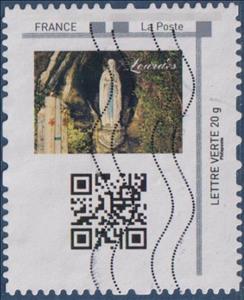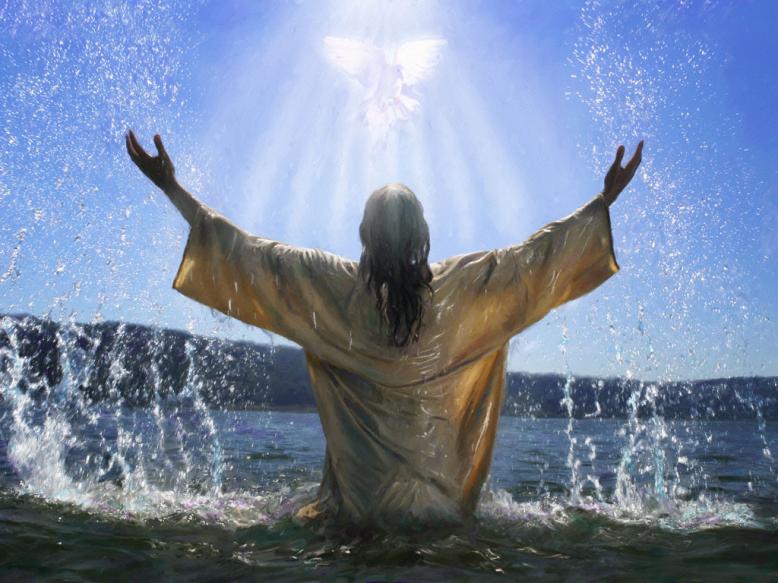Stamp: Lourdes. Statue of the Virgin. QR Code (France 2025)
Lourdes. Statue of the Virgin. QR Code (France 2025)
01 January (France ) within release Collectors : Montimbramoi. Miscellaneous goes into circulation Stamp Lourdes. Statue of the Virgin. QR Code face value Lettre No Face Value
| Stamp Lourdes. Statue of the Virgin. QR Code in catalogues | |
|---|---|
| Colnect codes: | Col: FR-MON 2025-07 |
Stamp is square format.
The QR code links to the website of the Sanctuary. It is not a tracking code.Also in the issue Collectors : Montimbramoi. Miscellaneous:
- Stamp - La Chablisienne Chablis face value Destineo;
- Stamp - Art Exhibition. Cercle Levinois Arts Pluriels face value Lettre;
- Stamp - Dark Coast face value Lettre;
- Stamp - Field in Winter face value Monde;
- Stamp - Fondation de France face value Destineo;
- Stamp - Grande Site de France. Puy Mary Volcan du Cantal face value Lettre;
- Stamp - Lourdes. Statue of the Virgin. QR Code face value Lettre;
- Stamp - Man leaning in Silhouette face value Lettre;
- Stamp - Saint Paul face value Lettre;
- Stamp - Two Birds face value Lettre;
- Stamp - Vercingetorix face value Lettre;
- Stamp - Bovine Bull Logo face value Lettre;
- Stamp - Angel face value Lettre;
- Stamp - Cable Car face value Lettre;
- Stamp - Canal Tunnel face value Lettre;
- Stamp - Field of Sunflowers face value Destineo;
- Stamp - Its a girl face value Lettre;
- Stamp - The Lord's Day / Le Jour du Seigneur face value Lettre;
- Stamp - Verrerie d'Art. Glass Blowing face value Destineo;
- Stamp - Fondation Marechal Lattre 70 years face value Lettre;
- Stamp - Je suis poete face value Lettre;
- Stamp - Belle Isle en mer face value Lettre;
- Stamp - Clock face value Lettre;
- Stamp - Coat of Mortain face value Lettre;
- Stamp - Great Organ Notre Dame de Royan face value Lettre;
- Stamp - Maison en pierre face value Prioritaire;
- Stamp - Purple Butterfly design; Brest Cancer Awareness face value Lettre;
- Stamp - Radiology Levallois face value Lettre;
Stamp Lourdes. Statue of the Virgin. QR Code it reflects the thematic directions:
A Christian is a person who follows or adheres to Christianity, a monotheistic Abrahamic religion based on the life and teachings of Jesus Christ. Christians form the largest religious community in the world. The words Christ and Christian derive from the Koine Greek title Christós (Χριστός), a translation of the Biblical Hebrew term mashiach (מָשִׁיחַ) (usually rendered as messiah in English). While there are diverse interpretations of Christianity which sometimes conflict, they are united in believing that Jesus has a unique significance. The term Christian used as an adjective is descriptive of anything associated with Christianity or Christian churches, or in a proverbial sense "all that is noble, and good, and Christ-like." It does not have a meaning of 'of Christ' or 'related or pertaining to Christ'.
Religion is any cultural system of designated behaviors and practices, world views, texts, sanctified places, ethics, or organizations, that relate humanity to the supernatural or transcendental. Religions relate humanity to what anthropologist Clifford Geertz has referred to as a cosmic "order of existence". Different religions may or may not contain various elements ranging from the "divine", "sacred things", "faith", a "supernatural being or supernatural beings" or "some sort of ultimacy and transcendence that will provide norms and power for the rest of life". Religious practices may include rituals, sermons, commemoration or veneration (of deities), sacrifices, festivals, feasts, trances, initiations, funerary services, matrimonial services, meditation, prayer, music, art, dance, public service, or other aspects of human culture. Religions have sacred histories and narratives, which may be preserved in sacred scriptures, and symbols and holy places, that aim mostly to give a meaning to life. Religions may contain symbolic stories, which are sometimes said by followers to be true, that have the side purpose of explaining the origin of life, the Universe and other things. Traditionally, faith, in addition to reason, has been considered a source of religious beliefs. There are an estimated 10,000 distinct religions worldwide. About 84% of the world's population is affiliated with one of the five largest religions, namely Christianity, Islam, Hinduism, Buddhism or forms of folk religion.
A statue is a free-standing sculpture in which the realistic, full-length figures of persons or animals are carved or cast in a durable material such as wood, metal or stone. Typical statues are life-sized or close to life-size. A sculpture that represents persons or animals in full figure, but that is small enough to lift and carry is a statuette or figurine, whilst those that are more than twice life-size are regarded as colossal statues.



